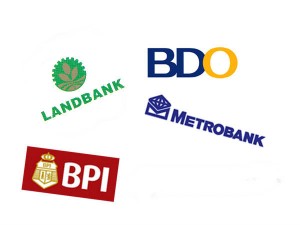Resources of PH banks reached P8.36T in 2012
MANILA, Philippines—The growth in the combined resources of the banking sector accelerated in 2012 as the country’s better-than-expected economic growth pushed savings and boosted demand for financial services.
Data from the Bangko Sentral ng Pilipinas showed that banks in the country ended 2012 with combined resources of P8.36 trillion, up by 9.4 percent from P7.64 trillion the previous year.
The year-on-year growth in resources was faster than the 5.7 percent growth posted in 2011.
Monetary officials said the enormous resources of banks indicated that there are enough funds to bankroll investments.
They added that the banking sector’s resources would further grow this year on the back of a healthy economy.
Of the total resources in 2012, universal and commercial banks accounted for P7.49 trillion.
Thrift banks accounted for P681.55 billion, while rural and cooperative banks accounted for the balance of P187.62 billion.
Bank resources are composed largely of deposits from the public, profits and retained earnings.
The growth in deposits from individuals and businesses was aided by rising household and corporate incomes.
Remittances from overseas Filipino workers were largely credited for helping increase savings of at least 10 percent of households in the country.
Higher profits and retained earnings of banks were attributed to the increase in demand for loans and other financial services that came with an expanding economy.
Last year, the Philippines grew by 6.6 percent, beating most projections and the government’s official target of 5 to 6 percent.
Given their increasing resources, the BSP has encouraged regulated institutions to boost lending to businesses that have investment plans.
Outstanding loans from universal and commercial banks in the country actually grew by 16.4 percent last year.
Officials said that there was still room for growth with lending seen rising at a double-digit pace without triggering worrisome inflation.
Outstanding loans reached P3.24 trillion as of the end of 2012 compared with P2.79 trillion at the end of 2011.
“Domestic credit-to-GDP ratio [in the Philippines] still ranks among the lowest in the region,” BSP Governor Amando Tetangco Jr. said in an economic forum Tuesday.
The ratio for the Philippines stood at 50.4 percent as of end-2012.
The ratios stood above 100 percent for Malaysia, Singapore, Japan, China, and Korea.
The BSP said efforts to attract foreign investors should be strengthened for the economy to take advantage of the huge funds available in the country’s banking sector.

